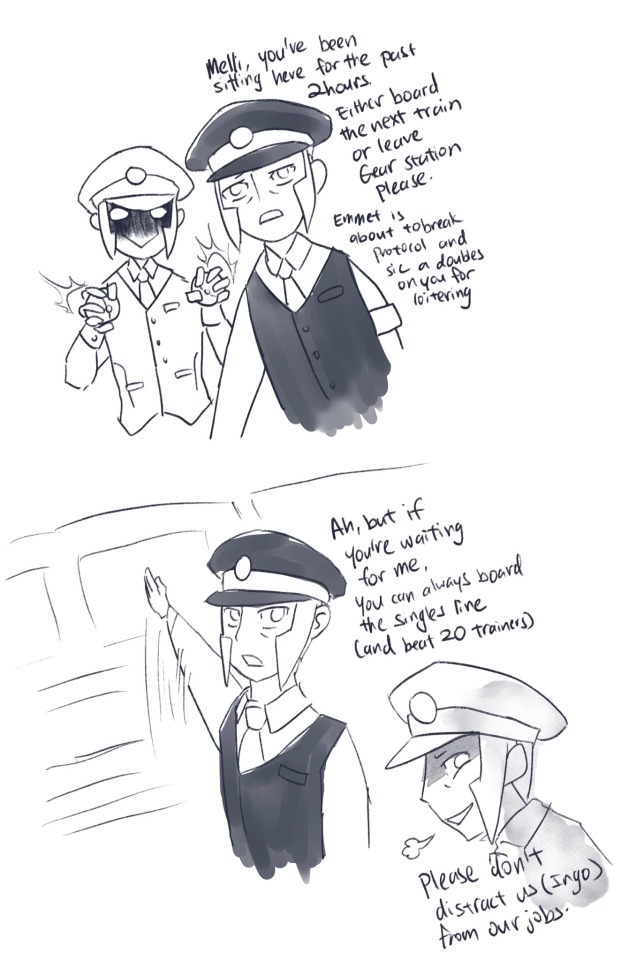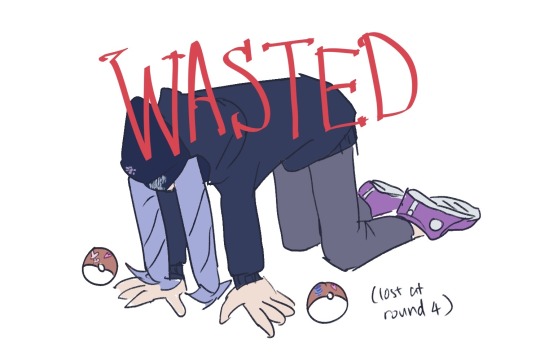#osha safety
Explore tagged Tumblr posts
Text

His name is Osha and he cares about your work safety
13 notes
·
View notes
Text
More good things the Biden administration is doing: OSHA heat safety rules for workers
Remember when Texas and Florida passed laws preventing local and municipal governments from implementing their own heat safety rules and said that if heat is such a big problem, OSHA should make rules that apply to everyone? If not, NPR can remind you. OSHA has now accepted the challenge, moving much faster than they usually do:
OSHA National News Release U.S. Department of Labor July 2, 2024 Biden-Harris administration announces proposed rule to protect indoor, outdoor workers from extreme heat WASHINGTON – The U.S. Department of Labor has released a proposed rule with the goal of protecting millions of workers from the significant health risks of extreme heat. If finalized, the proposed rule would help protect approximately 36 million workers in indoor and outdoor work settings and substantially reduce heat injuries, illnesses, and deaths in the workplace. Heat is the leading cause of weather-related deaths in the U.S. Excessive workplace heat can lead to heat stroke and even death. While heat hazards impact workers in many industries, workers of color have a higher likelihood of working in jobs with hazardous heat exposure. “Every worker should come home safe and healthy at the end of the day, which is why the Biden-Harris administration is taking this significant step to protect workers from the dangers posed by extreme heat,” said Acting Secretary of Labor Julie Su. “As the most pro-worker administration in history, we are committed to ensuring that those doing difficult work in some of our economy’s most critical sectors are valued and kept safe in the workplace.” The proposed rule would require employers to develop an injury and illness prevention plan to control heat hazards in workplaces affected by excessive heat. Among other things, the plan would require employers to evaluate heat risks and — when heat increases risks to workers — implement requirements for drinking water, rest breaks and control of indoor heat. It would also require a plan to protect new or returning workers unaccustomed to working in high heat conditions. “Workers all over the country are passing out, suffering heat stroke and dying from heat exposure from just doing their jobs, and something must be done to protect them,” said Assistant Secretary for Occupational Safety and Health Douglas L. Parker. “Today’s proposal is an important next step in the process to receive public input to craft a ‘win-win’ final rule that protects workers while being practical and workable for employers.” Employers would also be required to provide training, have procedures to respond if a worker is experiencing signs and symptoms of a heat-related illness, and take immediate action to help a worker experiencing signs and symptoms of a heat emergency. The public is encouraged to submit written comments on the rule once it is published in the Federal Register. The agency also anticipates a public hearing after the close of the written comment period. More information will be available on submitting comments when the rule is published. In the interim, OSHA continues to direct significant existing outreach and enforcement resources to educate employers and workers and hold businesses accountable for violations of the Occupational Safety and Health Act’s general duty clause, 29 U.S.C. § 654(a)(1) and other applicable regulations. Record-breaking temperatures across the nation have increased the risks people face on-the-job, especially in summer months. Every year, dozens of workers die and thousands more suffer illnesses related to hazardous heat exposure that, sadly, are most often preventable. The agency continues to conduct heat-related inspections under its National Emphasis Program – Outdoor and Indoor Heat-Related Hazards, launched in 2022. The program inspects workplaces with the highest exposures to heat-related hazards proactively to prevent workers from suffering injury, illness or death needlessly. Since the launch, OSHA has conducted more than 5,000 federal heat-related inspections. In addition, the agency is prioritizing programmed inspections in agricultural industries that employ temporary, nonimmigrant H-2A workers for seasonal labor. These workers face unique vulnerabilities, including potential language barriers, less control over their living and working conditions, and possible lack of acclimatization, and are at high risk of hazardous heat exposure.
#biden harris administration#biden administration#osha#heat safety#worker safety#biden 2024#biden harris 2024#vote for democrats#vote blue#vote biden#us politics#us law
982 notes
·
View notes
Text
Anti-mask policies and decision makers are using the momentum of anti-masking in the context of covid to also prevent people from accessing or using respirators to protect their breathing and lungs from other hazards -- things that were accepted in many industries as standard safety protocols before 2020.
"“During his first week, Complainant started coughing up black phlegm, his throat and tongue would burn, and he began having breathing problems due to excessive smoke and fumes from the cupola. He notified Sturgeon but nothing changed, and he was not provided a respirator.”
After not receiving a respirator, the lawsuit said the man went to the dispensary room and picked up a respirator himself.
He wore the respirator for the next week until the lawsuit said the safety supervisor saw him wearing it and “immediately became very upset; he rudely admonished the Complainant in front of his co-workers for wearing the respirator and demanded that he take it off immediately.”
According to the lawsuit, he told the safety supervisor he did not feel safe doing his job without it and was pulled into a meeting the next day where he was told he would not be allowed to wear a respirator.
...
After the meeting, the complaint said he was assigned to shovel gravel for the day before going home for the weekend at the end of his shift. On Monday, his employment was terminated.
The Occupational Safety and Health Administration (OSHA) opened an investigation into the company after learning of the alleged retaliation, and the DOL said in a statement that OSHA investigators with the Whistleblower’s Protection Program found the company violated federal protections by terminating the employee who exercised their protected rights to request protective equipment."
4K notes
·
View notes
Text


"Wait."
The Acolyte (2024) by Leslye Headland
#acolyteedit#swedit#starwarsedit#the acolyte#star wars#osha aniseya#qimir#qimir the stranger#osha x qimir#oshamir#amandla stenberg#manny jacinto#tv#gif#*#q#hands#usermonstress#repressionrepresentation#knifeposting#down so bad i'm using this sacred tag and making big square gifs...#anyways isn't it funny that this is the last thing we hear them say to each other#and isn't it crazy that this is technically sol's lightsaber which SHE won which SHE turned red#the lightsaber that already would have killed him nearly TWICE had she and her sister not saved him#the lightsaber that destroyed his very own weapon#which he takes off her for his safety then oh so graciously gives back to her once she agrees to stay#and then he later places his hand over it like this is something they both achieved lol qimir bro you are not in controllll#whatever it's whatever did everyone enjoy the thumb caress? I thought the thumb caress was LOVELY
489 notes
·
View notes
Text
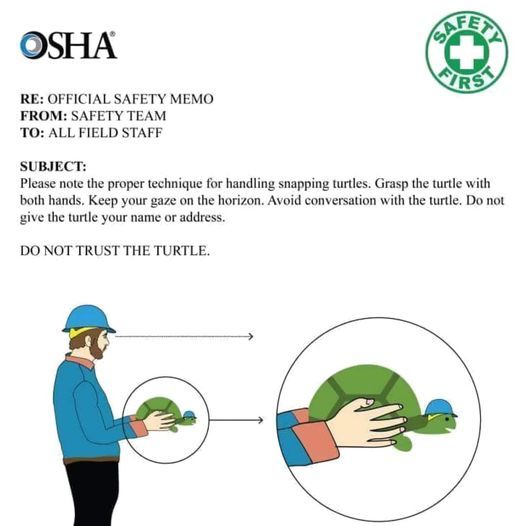
2K notes
·
View notes
Text

mug that messes with my perception of reality. all mugs look wrong now. sorry for not photographing in the store
#shiftythrifting#thrifting#submission#mugs#golf#y'alls hauls#you doin some osha roleplay?#I take off my helmet and safety goggles
310 notes
·
View notes
Text
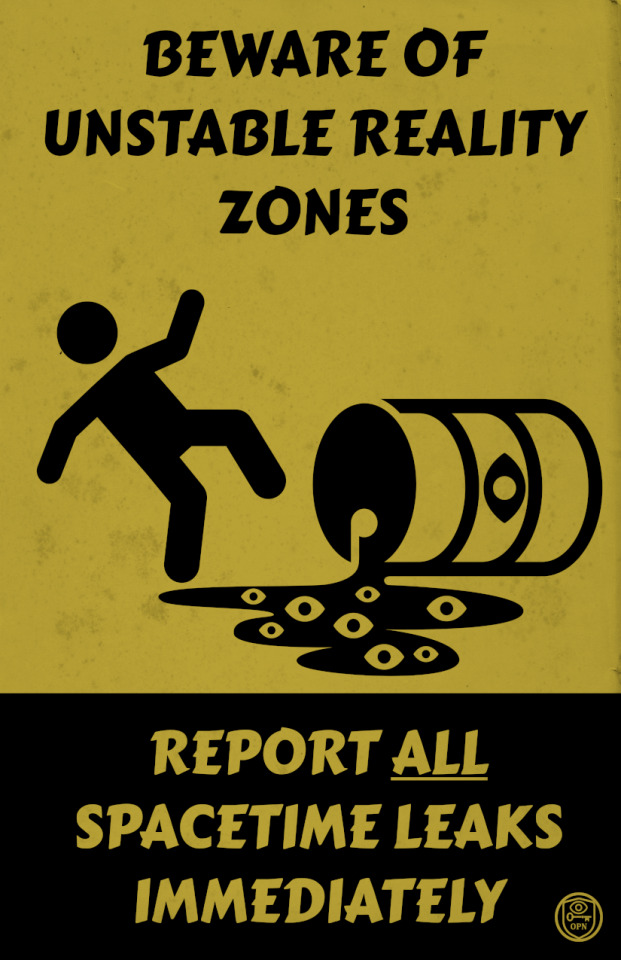
[Somewhere deep in the Bronx there’s a warehouse building with a big sign that reads “Carpet Heaven,” and I’m standing outside of it. When I blinked, it changed to “OPN Site 27.” It stayed like that after I looked at it again - a feature of the Office’s “memetic masking” that hides their locations from those not exposed to the supernatural. Or “Extranormal,” as is the Office’s preferred term. Site 27 is the official name for the location - though the staff that work there call it something else: the Station.
Graffiti dots the bricks of the building’s exterior, following me up the small stairs to the building’s entrance. There’s a nondescript door that buzzes as I approach, quietly unlatching. Past the doors, security towers loom in front of me. An electronic voice asks me to place my belongings in a tray and slide them into a conveyor. I do as I’m asked, but I’m somewhat confused - why does this place need so much security?]
A few moments later, I retrieve my things from the tray and keep moving. I’ve become used to the intentional plainness of Office locations. I’m always torn as to what it means. In a place like this, it’s obviously meant to put people off. This is Carpet Heaven, the most boring place in the world. Every panel, every wall, every chair seems to be chosen with the sole purpose of being as unremarkable as possible. But then, many interior locations within the Office are similarly designed. They’re not designed to fool anyone. Did the designers just get used to it?]
[My thoughts are interrupted as I walk into the tiny reception room, a desk with a few chairs and a single fake potted plant. A man stops his conversation with the receptionist, looking me up and down. He’s short and stocky, heavyset, a man clearly used to physical labor - and judging by the look on his face, not used to being inconvenienced at work. His hairy arms folded over a broad chest, his thick eyebrows scrunched into a wary suspicion. A thick mustache completes the look of a blue collar dad, close to retirement but not close enough.]
B] Hendricks. Ma’am.
M] Mr Koppel?
B] Call me Barry.
M] I hear you’re the person to talk to when it comes to occupational health and safety in the Office.
B] I got a reputation for it.
M] I saw the poster about, uh….unstable reality zones, and I wanted to ask you about it.
B] About the zones, or our response to ‘em.
M] Sort of…both if that’s okay. I figured a quick tour wouldn’t be out of the question.
[He nods, his arms not moving from their position across his chest. His voice had an air of curt evasiveness, clearly not enjoying my questions. Now, there’s a moment of awkward silence.]
M] You seem annoyed, Barry.
B] Yeah, well. Let’s just say I wasn’t real happy when I heard you were coming over. Especially today.
M] What’s today?
B] Work meeting later. Something I didn’t think I’d have to start late, and I hope I won’t have to.
M] I won’t take up too much of your time, I promise.
B] No. You won’t.
[It’s a veiled threat, but his tone doesn’t veil it very well. He gives the receptionist a look that she returns, and jerks his head slightly, leading me through the door deeper into the facility. Past the doors, it looks like something you’d expect from a government facility: bare concrete and pipes, emergency lights every several yards. It all looks very old. At this point, Barry seems to catch himself, his tone shifting to that of a practiced but bored tour guide as he leads me down the hallway.]
B] This is OPN Facility 27, known as the Northeastern Power Facility, or to the people that actually work here, the Station. The Station was discovered in 1932 during Operation Doorway, an attempt to investigate rumors of spatially-noncompliant buildings in the United States - that is, buildings bigger on the inside. After mapping and cataloging it, the Station had the distinction of being one of the few spatially noncompliant facilities grandfathered into current extranormal building code.
[Just down the hall is a locker room, which we move through. Barry points to a sign that reads “Hard Hat Area Past This Point” and hands me a hat taken off of a nearby peg.]
B] In other words, this facility is one of the only places in the US legally allowed to be bigger on the inside. The Office did this cause, for reasons that still ain’t totally clear, the Station anomalously produces enough electricity to power the entire eastern seaboard with no energy input. This building powers every Office facility this side of the Mississippi and north of the Mason-Dixon. New York, DC, Philly, Boston. Further than that, with hydrogen.
[Opening the next set of doors, the facility opens up substantially, a wide open space that looks more like I’d think a warehouse would look. The ceiling several stories above, massive industrial shelves at the edges of the space, machines operating in distinct areas of the room. A forklift beeping away, carrying yellow drum barrels on a pallet. A few workers were here and there, some of them giving Barry a quizzical look that he didn’t return.]
B] It needs people like us to maintain the works during reality shifts, pump out the byproduct, keep everything in as much working order as we can.
[Another set of doors ahead - a massive sign above them reading “End of Geometrically Compliant Building Space.” The hazard symbol on the sign depicted a building within a larger building, the larger of the structures emblazoned with the eye symbol and a question mark. Another sign on the door read “Audio-Memetic Inoculation Equipment Required” with a depiction of a head wearing both a hard hat and large headphones. Barry stopped and jerked a thumb at the door. His voice was low and serious.]
B] Like any spatially-noncompliant structure, this place doesn’t make sense. This wall right here is the absolute limit of what the building’s size should allow, and as you can see, it keeps going.
[He paused, looking back the way we came for a moment.]
B] When the Office figured out they could use this place for free power, they rushed in. But the Station….it didn’t take kindly to that. It doesn’t like intruders. The higher-ups don’t like hearing it, but this place is….kinda alive. It grows, changes. We don’t know who built it, or even if anyone built it. Coulda just appeared one day. From the late 30’s to the early 40’s, it was…a lot of death, lotta guys going home without hands or legs or an eye. Machines not working right, hallways shifting around, pipe structures growing suddenly. There’s places, deep in the belly of this fucking machine, that I’ll never go…we’ve blocked off rooms where time runs in reverse, or that swap temperature extremes every forty-five seconds. Lotta guys like me laid down their lives figuring this place out, mapping it. That’s what the signs and posters are for. Every warning in this building is written in blood.
[He gestured to a worker at a nearby desk, who got up and reached for a tray.]
B] Just past these doors, there’s a hallway in complete silence. Not just a lack of sound, pure silence. If you listen to the lack of sound, you go insane. Understand?
M] I don’t understand why you can’t just…avoid it, or unravel it, or—
B] The Office ain’t gonna just put it’s head in the sand, ma’am. It can’t. And all respect to the wizards and shit upstairs, but sometimes you can’t just wave your hand and make it go away, either. The Station is important. Without us, the entire Office goes down. It’s the sacrifice we make. We gotta deal with the situation in front of us, and sometimes the situation’s got teeth.
[The worker walked up, offering Barry two pairs of headphones and a clipboard. He took them, checked them over, and handed one to me.]
B] Here. Press the button on the right side, you’ll hear elevator music and nothing else. This’ll protect you from the silence. Then initial the sign out sheet.
[I did so, sliding the bulky device over my head and hearing generic Muzak once I hit the nub on the right. At this point, I didn’t question much of anything. They knew what they were doing. I took the clipboard from him - the sheet was keeping track of the headphones, calling them safety equipment. I wrote my initials on the sheet, noting I was a ‘visitor’, and as I did I noticed Barry and the other worker conversing in sign language.
I was slightly surprised at first. But it made sense - if you had to work a lot of the time in silence with these headphones on, it might be worth the time to teach everyone ASL. I tried not to betray any comprehension. They didn’t need to know I’d grown up with a deaf cousin, had a deaf roommate in college, that while I was rusty I could understand most of what they were saying. The two men gestured furtively, quickly, an ‘accent’ that tinged their words.]
<We have to postpone union meeting?>
<No. Same time. Won’t take long. Lady is looking for scapegoat.>
<From Upstairs?>
<Unlikely. Ghost-talking I-R-E-N-E telling me she’s been asking around lots of departments.>
<Why?>
<Don’t know. Could be politics.>
<LA?>
[Barry looked over his shoulder, and I tried to look nonchalant, putting the clipboard on a hook by the door and giving him a smile and a thumbs up.]
<Maybe.>
[He nodded and opened the door. I felt a physical sensation as I passed the threshold, and it was silent. It was a silence so intense I could feel it on my skin. When my feet hit the floor I felt nothing, not even the vibration through my own body. It was oppressive, covering me in a heavy blanket. I heard the music in my ears but I was intensely aware that a bundle of plastic and electronics was all that stood between me and…that. I felt like an eternity. I tried to focus on the music as my vision swam, having to stop to breathe when we rounded a corner. When we finally passed through the hallway, taped marks on the floor told me where it was safe to take off my headphones. I was almost out of breath, a little disoriented.]
B] You get used to it.
M] Do you?
B] You gotta if you work here, ma’am.
[His voice slipped back into tour guide mode as the space widened again. Huge doorways on each of the three walls ahead, large enough for a vehicle to pass through. Each passageway had different signage, and two had a conveyor belt stretched across the room, running parallel above us with clear markings on the floor underneath them.]
B] To the left we have the Gearbox, straight ahead is Onto-Runoff Byproduct Packaging, and to the right is the Dynamos, where we try and funnel all power generated by the Station so it can be directed to other facilities or converted into hydrogen energy storage.
M] Onto-Runoff?
B] That, ma’am, is the stuff on the posters.
[He pointed up to the conveyor belt. Yellow barrels traveled across the room, stamped with the Office logo on one side, and a depiction of an eye on the other.]
B] It’s a byproduct of the Station’s works. The labcoats have been studying it for decades. They’re not real sure what it is, just that it…kind of isn't. It technically doesn’t actually exist. No mass, can't be detected on any spectrum they got. Theory is that we're not actually seeing it, just the absence it creates. Pure, concentrated entropy, runoff from the Station creating energy from nothing. You can’t violate laws of spacetime without some consequences, and in this case it’s creating all this…almost-kinda-real entropy that gets everywhere if we don’t clean it up.
M] Sounds like the Ontophages.
B] Yeah, like that. They think they’re related, but we ain’t seen an Ontophage down here in ages. This non-stuff drops off pipes down in the works, or leaks out of compressors. Pools in lower areas, or gums up machines. If it touches anything outside of the works that exists, it starts to cause what the Office calls ontological dissolution - it gradually stops existing, like an acid that melts reality. Some of it gets processed for the Office’s use, some of it goes to the folks at the Yellow Circle, a good chunk of it goes to long term storage.
M] What does the Office use it for?
[At this, Barry gives me a sidelong look as we approach a small office in the corner between two junctions, little more than a shack.]
B] That part’s classified. We don’t even know. They don’t tell us. Could be a secondary energy process, could be they use it to contain something….could be a weapon.
[The tone in that last phrase…we enter the shack and Barry grabs a drink from a water cooler.]
M] You sound like you have an idea of what it’s used for.
B] A hunch. This stuff is dangerous. It’s half the reason we made the Union way back.
M] The Union?
[I remembered them signing that word - two fingers extended on each hand, moved in a horizontally circular motion.]
B] The North American Supernatural Worker’s Guild. Started in ‘42 after the big paracompressor explosion down in sublevel 17. The Office kept pushing us, we kept cutting corners, and eventually five people died. Including my great uncle. After that, my grandfather started the Union to push for better working conditions and hazard pay.
[His tone is softer now, taking a drink. He gestures to the Unstable Reality Zones poster on the wall, a copy of which began my trip here.]
B] I could talk all day about the history of it. We ain’t perfect, of course. Didn’t accept nonhumans until ‘63, which my father went to his grave ashamed of, but we’re the reason the Office more or less abides by the safety guidelines we’ve come up with. Without that there’s a work stoppage, and everything grinds to a halt.
M] Has there been a lot of conflict between the Union and the Office in the past?
B] It’s all conflict, ma’am. The Union and the Office are engaged in a state of irreconcilable disagreement. They wanna pay less and get more, we want better pay and better, safer work. The whole history of the Office can be seen through that lens.
M] Do you see the posters as a win for the Union?
B] Without a doubt. You know the bodycount we’d have if we didn’t keep drilling all our safety precautions into everyone’s heads? Safety win, morale win. We need all the help we can get.
M] What do you mean?
[Barry finishes his drink, looking away, through the window looking out onto the junction.]
B] Ehh. I’ve said enough already.
M] You too, huh.
B] Hm?
M] Everywhere I go in this organization I’m being bounced off walls. Secrecy seems to be something you and the office both abide by. The Office acts like it’s giving me clearance, but….they’re curating my job.
B] Mmmh.
M] Everyone I talk to is knowledgeable about what I’m asking, sure, but they’re also….company people. All of them are either trying to cover their ass or they honestly believe that they’re doing the most important job in the world. The only person I’ve met so far with an honest opinion on the Office is you. I thought I might get some actual answers.
B] About what?
M] Anything. How the Office determines normality, the numbers stations, the identity of the Director…what happened in Los Angeles.
[He stiffens.]
B] I don’t know anything about that.
M] You said the Runoff could be used as a weapon -
B] I said I had a hunch. Don’t put words in my mouth.
M] What’s your hunch based on?
B] Listen. I’m one of those guys covering my ass. If I say something I shouldn’t or I fuck up, I don’t get a slap on the wrist. I'm not some spokesman for the Board of Infernal Affairs. I’m a union officer, and we’re already on thin goddamned ice with the Office. Secrecy is a tool. We both use it for our own goals.
M] So you can’t help me.
B] I’m walking you back. This is fucking over.
M] That’s…probably for the best.
[I let the moment pass before I speak again.]
M] I don’t want to keep you from your union meeting tonight.
[He stops in his tracks, shooting a look over his shoulder. His face moves from surprise to realization to suspicion. After a moment he half turns back to me.]
B] Ma’am, what are you here for?
M] I just…want answers. All of these interviews have been someone beating around the bush because they’re scared. After your speech about it, I thought the union would be people who could stand up.
[Barry hesitates, frowns, and silently turns back to keep walking. My face burns in embarrassment, my heart racing. This wasn’t worth it. I wanted answers but this wasn’t worth it, was it? Shame now, but what if I pushed a button I couldn’t un-press?
Barry doesn’t speak. We reenter the room of silence, mechanically putting our headphones back on. As we round the corner in the hallway again, he stops. Of course I can’t hear him, but his frame calls as if he’s letting out a heavy sigh. He turns to me, and signs.]
<Back there, I was being honest. None of us know what happened, but we know something did. We have some shipment records that don’t make sense. Runoff shipped en masse to some site that’s not on public record anymore. Something called Project D-A-M-M-E-R-U-N-G. Our records are shredded. It’s like…>
[He trailed off - with signing, he sort of stared into space and tried to find the right words.]
<Like someone or something came in and tried to destroy everything to do with a certain subject, but only mostly succeeded. Like every fiftieth paper survived or was passed over. That’s what our meeting is about tonight. We know something happened and we’re deciding what to do next. You mentioned the stations. The stations are a part of it.>
[He pulls a pen from his vest pocket and writes down an address, handing me the paper.]
<Memorize this address, then burn it before you leave. Bring P-E-P-P-E-R-M-I-N-T oil. Put it on before you go. You’ll need it.>
(Buy the poster here.)
#office for the preservation of normalcy#interview#osha violation#still technically on hiatus#safety#workplace safety#health and safety#microfiction#short fiction#sci fi#urban fantasy#writers on tumblr
198 notes
·
View notes
Text
American workers are dying, local businesses are reporting a drop in productivity, and the country's economy is losing billions all because of one problem: the heat. July was the hottest month on record on our planet, according to scientists. This entire summer, so far, has been marked by scorching temperatures for much of the U.S. South, with the thermometer reaching triple digits in several places in Texas between June and July. In that same period, at least two people died in the state while working under the stifling heat enveloping Texas, a 35-year-old utility lineman, and a 66-year-old USPS carrier. According to the Bureau of Labor Statistics, there were 36 work-related deaths due to environmental heat exposure in 2021, the latest data available. This was a drop from 56 deaths in 2020, and the lowest number since 2017. "Workers who are exposed to extreme heat or work in hot environments may be at risk of heat stress," Kathleen Conley, a spokesperson for the Centers for Disease Control and Prevention (CDC), told Newsweek. "Heat stress can result in heat stroke, heat exhaustion, heat cramps, or heat rashes. Heat can also increase the risk of injuries in workers as it may result in sweaty palms, fogged-up safety glasses, and dizziness. Burns may also occur as a result of accidental contact with hot surfaces or steam." While there is a minimum working temperature in the U.S., there's no maximum working temperature set by law at a federal level. The CDC makes recommendations for employers to avoid heat stress in the workplace, but these are not legally binding requirements. The Biden administration has tasked the Occupational Safety and Health Administration (OSHA) with updating its worker safety policies in light of the extreme heat. But the federal standards could take years to develop—leaving the issue in the hands of individual states. Things aren't moving nearly as fast as the emergency would require—and it's the politics around the way we look at work, the labor market, and the rights of workers in the U.S. that is slowing things down.
967 notes
·
View notes
Text

It just occurred to me, I never posted OSHAwott here, so here he is!
54 notes
·
View notes
Text
I am writing the funniest script to a video essay ever. This is the first draft and it’s a 1 am ramble.
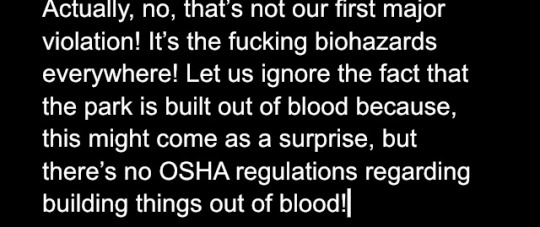
#evora original#limbus stuff#limbus company#canto 7 spoilers#shoutout to the anon who asked the la manchaland ask blog if they were osha safety.#in summary: I thought they were fine but they’ve got a HUGE number of violations.
56 notes
·
View notes
Text
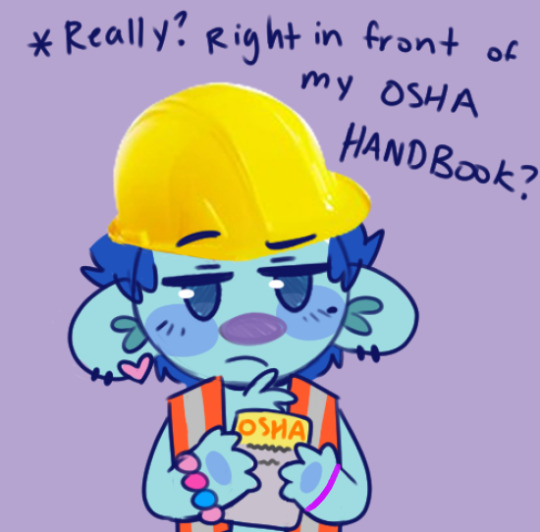
someone put a glitter cannon within a no party cannon zone and started playing patty cake infront of it smh
#dreamworks trolls#branch#branch trolls#my au#safety rules and osha regulations are very important!#doodle#sketch#shitpost#osha
163 notes
·
View notes
Text
would love to write a romance book where the main characters' names are noah and iris and everyone loves it and it gets super popular and people are obsessed and are posting meta about it and someone asks me on twitter (i get a twitter specifically in preparation for this) why i chose the names noah and iris. they have done the research and know that noah means both 'to rest' and 'in motion' which encapsulates his character, while 'iris' means rainbow which could be a nod to her being queercoded, which many readers have picked up on. i reply that noah is NOAA, the National Oceanic and Atmospheric Administration, and iris is IRS, the Internal Revenue Service. i never again answer another question about this
#kit to kit#morning thoughts with kit before she finishes her coffee are like#their best friends are Dea and Osha btw#(Drug Enforcement Agency and Occupational Safety and health administration)
58 notes
·
View notes
Text
Big Train managers earn bonuses for greenlighting unsafe cars

Tomorrow (November 16) I'll be in Stratford, Ontario, appearing onstage with Vass Bednar as part of the CBC IDEAS Festival. I'm also doing an afternoon session for middle-schoolers at the Stratford Public Library.

Almost no one knows this, but last June, a 90-car train got away from its crew in Hernando, MS, rolling three miles through two public crossings, a ghost train that included 47 potentially explosive propane cars. The "bomb train" neither crashed nor derailed, which meant that Grenada Railroad/Gulf & Atantic didn't have to report it.
This is just one of many terrifying near-misses that are increasingly common in America's hyper-concentrated, private equity-dominated rail sector, where unsafe practices dominate and whistleblowers face brutal retaliation for coming forward to regulators.
These unsafe practices – and the corporate policies that deliberately gave rise to them – are documented in terrifying, eye-watering detail in a deeply reported Propublica story by Topher Sanders, Jessica Lussenhop,Dan Schwartz, Danelle Morton and Gabriel L Sandoval:
https://www.propublica.org/article/railroad-safety-union-pacific-csx-bnsf-trains-freight
It's a tale of depraved indifference to public safety, backstopped by worker intimidation. The reporting is centered on railyard maintenance inspectors, who are charged with writing up "bad orders" to prevent unsafe railcars from shipping out. As private equity firms consolidated rail into an ever-dwindling number of companies, these workers face supervisors who are increasingly hostile to these bad orders.
It got so alarming that some staffers started carrying hidden digital recorders, so they could capture audio of their bosses illegally ordering them to greenlight railcars that were too unsafe for use. The article features direct – and alarming – quotes, like supervisor Andrew Letcher, boss of the maintenance crews at Union Pacific's Kansas City yard saying, "If I was an inspector on a train I would probably let some of that nitpicky shit go."
Letcher – and fellow managers for other Tier 1 railroads quoted in the piece – aren't innately hostile to public safety. They are quite frank about why they want inspectors to "let that nitpicky shit go." As Letcher explains, "The first thing that I’m getting questioned about right now, every day, is why we’re over 200 bad orders and what we’re doing to get them down."
In other words, corporate rail owners have ordered their supervisors to reduce the amount of maintenance outages on the rail lines, but have not given them additional preventative maintenance budgets or crew. These supervisors warn their employees that high numbers of bad orders could cost them their jobs, even lead to the shutdown of the car shops where inspectors are prone to pulling dangerous cars out of service.
It's a ruthless form of winnowing. Gresham's Law holds that "bad money drives out good" – in an economy where counterfeit money circulates, people preferentially spend their fake money to get it out of their hands, until all the money in circulation is funny money. This is the rail safety equivalent: simply fire everyone who reports unsafe conditions and all your railcars will be deemed safe, with the worst railcars shipped out first. A market for lemons – except these aren't balky used sedans, they're unsafe railcars full of toxic chemicals or explosive propane.
When cataclysmic rail disasters occur – like this year's East Palestine derailment – the rail industry reassures us that this is an isolated incident, pointing to the system's excellent overall safety record. But that record is a mirage, because the near-misses don't have to be reported. Those near-misses are coming more frequently, as the culture of profit over safety incurs a mounting maintenance debt, filling America's rails with potential "bomb cars."
Rail mergers and other forms of deregulated, anything-goes capitalism are justified by conservative economists who insist that "incentives matter," and that the profit motive provides the incentive to improve efficiency, leading to lower costs and better service. But the incentive to externalize risk, kick the can down the road, and capture regulators rarely concerns the "incentives matter" crowd.
Here's an incentive that matters. Rail managers' bonuses – as much as a fifth of their take home pay – are only paid if the trains they oversee run on time. Inspectors have recorded their managers admitting that they have quotas – a maximum number of bad orders their facility may produce, irrespective of how much unsafe rolling stock passes through the facility.
Inspectors have caught their managers removing repair order tags from cars they've flagged as unsafe. Inspectors will log orders in a database, only to have the record mysteriously deleted, or marked as serviced when no service has occurred. Some inspectors have seen the same cars in their yard with the same problems, and repeatedly flagged them without any maintenance being performed before they're shipped out again.
Former managers from Union Pacific, CSX and Norfolk Southern told Propublica that they operated in an environment where safety reports were discouraged, and that workers who filed these reports were viewed as "complainers." Workers furnished Propublica with recordings of rail managers berating them for reporting persistent unsafe conditions the Federal Railroad Administration. Other workers from BNSF said that they believed that their bosses were told when they called the company's "confidential" work-safety tipline, setting them up for retaliation by bosses who'd falsified safety reports.
Whistleblowers who seek justice at OSHA are stymied by long delays, and while switching their cases to court can win them cash settlements, these do not get recorded on the company's safety record, which allows the company to go on claiming to be a paragon of safety and prudence.
The culture of retaliation is pervasive, which explains how the 47-cars worth of propane on the "bomb train" that rolled unattended over three miles of track never made the news. There is a voluntary Close Call Reporting System (operated by NASA!) where rail companies can report these disasters. Not one of America's Class 1 rail companies participate in it.
After the East Palestine disaster, Transport Secretary Pete Buttigieg pushed the rail companies to join, but a year later, none have. It's part of an overall pattern with Secretary Buttigieg, who has prodigious, far-reaching powers under USC40 Section 41712(a), which allow him to punish companies for "unfair and deceptive" practices or "unfair methods of competition":
https://pluralistic.net/2023/01/10/the-courage-to-govern/#whos-in-charge
Buttigieg can't simply hand down orders under 41712(a) – to wield this power, he must follow administrative procedures, conducting market studies, seeking comment, and proposing a rule. Other members of the Biden administration with similar powers, like FTC chair Lina Khan, arrived in office with a ranked-priority list of bad corporate conduct and immediately set about teeing up rules to give relief to the American public.
By contrast, Buttigieg's agency has done precious little to establish the evidentiary record to punish the worst American companies under its remit. His most-touted achievement was to fine five airlines for saving money by cancelling their flights and stranding their passengers. But of the five airlines affected by Buttigieg's order, four were not US companies. The sole affected US carrier was Spirit airlines, with 2% of the market. The Big Four US airlines – who have a much worse record than the ones that were fined – were not affected at all:
https://prospect.org/infrastructure/transportation/ftc-noncompete-airline-flight-cancellation-buttigieg/
Rather than directly regulating the US transportation sector, Buttigieg prefers exacting nonbinding promises from them (like the Tier 1 rail companies' broken promise to sign up to the Close Call Reporting System). Under his leadership, the Federal Railroad Agency has proposed weakening rail safety standards, rescinding an order to improve the braking systems on undermaintained, mile-long trains carrying potentially deadly freight:
https://pluralistic.net/2023/02/11/dinah-wont-you-blow/#ecp
The US transportation system is accumulating a terrifying safety debt, behind a veil of corporate secrecy. It badly demands direct regulation and close oversight.
If you are interested in rail safety, I strongly recommend this episode of Well There's Your Problem, "a podcast about engineering disasters, with slides" – you will laugh your head off and then never sleep again:
https://www.youtube.com/watch?v=0BMQTdYXaH8

If you'd like an essay-formatted version of this post to read or share, here's a link to it on pluralistic.net, my surveillance-free, ad-free, tracker-free blog:
https://pluralistic.net/2023/11/15/safety-third/#all-the-livelong-day
#pluralistic#safety third#safety#whistleblowers#trains#railroad#rail safety#propublica#east palestine#monopoly#osha#bnsf#csx#bad orders#federal railroad administration#fra#association of american railroads#norfolk southern#union pacific#incentives matter#bomb train#Confidential Close Call Reporting System
162 notes
·
View notes
Text
I love trigun fanart and fanfiction that portray Wolfwood as looking at all the crazy and the weird stuff and the alien nonsense or even just the artists trying to make the twins attractive or whatnot and Wolfwood just being the most normal person there. Just like "i aint paid enough for this."
#trigun stampede#trigun#vash the stampede#vash#nicholas d wolfwood#he aint paid either that's the thing#he ought to be paid#dealing with millions knives should be considered a workplace hazard#or an osha violation#i mean he gets safety equipment#gun and also the serum#no hard hats here though
75 notes
·
View notes
Text
Tool Safety Series: Table Saws
Whether you're a professional woodworker or just a tool enthusiast, its never a bad idea to brush up on proper tool use and safety practices.
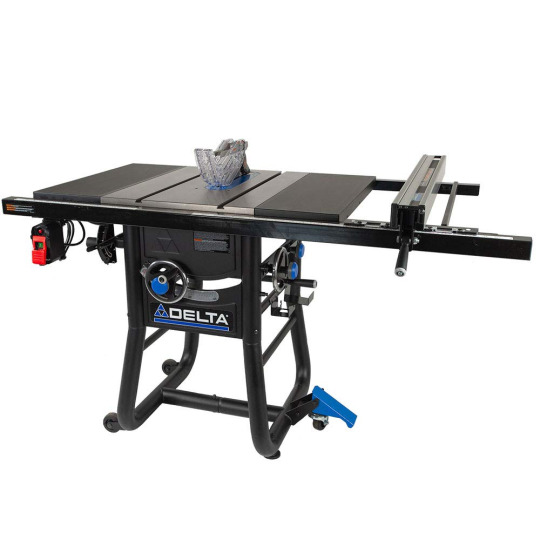

Pictured above are a contractor table saw (Left) and a cabinet maker table saw (Right). Despite their differences, the same standards and safety practices apply to both when hand feeding material.
Guard Requirements:
Blade guards
"Each circular hand-fed rip saw shall be provided with a hood-type guard that will cover the blade at all times when not in use. This may be accomplished by the use of a guard which will automatically adjust to the thickness of the material being cut, or by a fixed or manually adjusted guard" "Each circular hand-fed rip saw shall be provided with a hood-type guard that will cover the blade at all times when not in use. This may be accomplished by the use of a guard which will automatically adjust to the thickness of the material being cut, or by a fixed or manually adjusted guard"

Above is an automatically adjusting hood-type guard which doubles as a dust extraction hood. These protect operators from small debris that may be thrown back during a rip cut such as dust, splinters, loose knots, and foreign materials such as nails. A guard like this required to be in place at all times if the cut being made allows it. The hood may be removed for special cuts that would otherwise be impossible with the hood in place.
Spreaders
"Each hand-fed circular saw shall be equipped with a spreader to minimize the possibility of material squeezing the saw"

Even the slightest horizontal force on a board in the middle of a cut can cause it to kickback at incredible speed. The spreader helps mitigate this hazard by providing a static surface for cut material to slide against.
These standards are established by ANSI O1.1-1961: Safety Code for Woodworking Machinery - Section 6.1 and are incorporated by reference by 29 CFR 1926.304(f).
General Operating Procedures:
Never start the saw if material is touching the blade. The blade needs time to accelerate to operational speed and will kickback anything touching it when it starts up.
Avoid standing behind the space between the blade and the fence. It is much easier for material in this area to kickback into an operator. When possible, it is safest to stand on the left-hand side of the saw blade. Keep a wide stable stance when hand feeding material and avoid bending or leaning as this may lead to falls.
Related to the previous point, always keep a hand/push-stick on the material between the blade and the fence. This where kickback is most likely to occur. Push-sticks should be used if making narrow cuts that could bring an operators hands close to the blade.
Never apply lateral or vertical force to material being cut. Material must only receive force from behind and above to keep it flat on the table top and moving smoothly forward. Be especially aware of this when cutting large sheets of material with a partner.
Use a roller stand or ask for assistance when cutting material that hangs off the edge of the table top. Hanging material may cantilever the rest of the material, causing it to lift off the table top and kickback.

In the picture above, the person in pink in assists the operator in blue. As the operator in blue pushes the sheet through the blade, the assistant keeps their hands on the material, slowly walking along side it. If they were to apply force in any direction (other than to counter gravity) it would almost certainly cause the saw blade to bite into the material and potentially kick it back in to the operator.
Due to the versatility of table saws, these guidelines are not exhaustive. Be sure to read the operators manual before operating machinery for the first time.
413 notes
·
View notes
